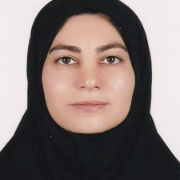Dear Editor,
Delayed childbearing is one of the common patterns of reproductive behavior in today’s world (1). The consequences of the couple’s age might need more assisted conception and have effects on pregnancy outcome (2). Low fertility is considered a big challenge for the government, although most families believe that the fertility below replacement is in favor of higher standards of living (3).
On the other hand, the coronavirus disease 2019 (COVID-19) pandemic affects the physical, mental, economic, or social health and wellbeing of pregnant women (4). It has disrupted maternal health and prenatal care worldwide, causing tight restrictions for pregnancy (5). The global economic downturn and the loss of numerous occupations might also affect maternal health.
The authors would like to present this study entitled “Nulliparous Women’s Attitudes toward Fertility and Childbearing in COVID-19 Pandemic”. The current study aimed to determine Iranian women’s attitudes toward fertility and childbearing. The study was conducted on nulliparous women who attended the outpatient clinics of two referral centers affiliated with Iran University of Medical Sciences, Tehran, Iran, within April to July 2021. The inclusion criteria were the age range of 18 - 40 years, no history of pregnancy, and ability to write and read in Persian. The cases of male or female infertility were excluded from the study.
The attitude to childbearing was evaluated by the attitude toward fertility and childbearing (ATFC) questionnaire that was introduced by Soderberg et al. (6), translated to Persian and validated with Cronbach’s alpha equal to 0.88 (7). This questionnaire contains 21 items that were answered on a 5-point Likert scale (strongly disagree: 1 to strongly agree: 5). The minimum and maximum scores were 21 and 105, respectively. A higher score indicated a more positive attitude toward fertility and childbearing. The data collection time for each questionnaire was about 15 minutes.
The data were collected by an online questionnaire provided by the researcher that was sent to the participants by SMS and analyzed by SPSS software (version 20). The Chi-square test was used to examine the relationship between the qualitative variables. Analysis of variance was used to compare more than two means, and analysis of covariance was used to determine the relationship between them. In case of abnormal data distribution, the nonparametric equivalent of the tests was used. A level of 0.05 was considered statistically significant. Totally, 270 female subjects were recruited in the study. Table 1 shows the demographic characteristics of the participants.
| Characteristics | Values a | ATFC Score a | P Value |
|---|---|---|---|
| Age (y) | 0.937 | ||
| Under 25 | 22.2 ± 1.7 | 71.47 ± 15.33 | |
| 25 and over | 30.7 ± 4.0 | 71.66 ± 16.67 | |
| Education | < 0.000 | ||
| High school | 27 (10) | 81.44 ± 14.09 | |
| Diploma | 40 (14.8) | 79.12 ± 13.85 | |
| Associate degree | 21 (7.8) | 71.42 ± 17.68 | |
| Bachelor’s degree | 86 (31.9) | 70.67 ± 17.06 | |
| Master’s degree | 34 (12.6) | 69.39 ± 13.69 | |
| PhD | 62 (23.0) | 65.01 ± 15.20 | |
| Income | < 0.000 | ||
| Under 100 $ | 40 (14.8) | 77.9 ± 15.05 | |
| 100 - 200 $ | 48 (17.8) | 73.56 ± 15.95 | |
| 200 - 400 $ | 100 (37) | 70.94 ± 15.47 | |
| Over 400 $ | 82 (30.4) | 68.50 ± 17.29 |
Demographic Characteristics and Attitude Toward Fertility and Childbearing Scores of the Participants
The tendency of the women for childbearing had decreased significantly with increasing their level of education and economic status. Otherwise, age was not a significant factor for childbearing. Based on the analysis of age, educational level, income level, and each of the ATFC scales in the subjects, it was shown that as the participants’ education and income levels increased, the importance of the child in the future and the resulting social identity decreased; on the other hand, the child was more considered a barrier in the present time. On the other hand, with increasing maternal age, fewer women see the child as an obstacle in the present.
As previously mentioned, women in today’s society are less inclined to have children. Additionally, considering the economic situation of Iran and job insecurity, especially in the COVID-19 pandemic, having a child is considered a significant risk, and the only way to address the couple’s economic and social concerns about childbearing is by providing stable conditions and support programs for the family institution by governments (8).
This study was conducted during the COVID-19 pandemic; therefore, there were high levels of fear of mother-to-fetus transmission, unemployment due to the pandemic, increased couple involvement in quarantine times, and stress (9). Furthermore, it seems that one of the reasons for the decrease in the number of women willing to have children is the COVID-19 pandemic, which can be reduced by providing appropriate counseling and economic services.
In conclusion, women in better economic status with higher educational levels had a lower tendency to have children. Appropriate governmental policies should be based on providing job security for women in case of pregnancy and economic stability to give a sense of security for couples to have children and planning support programs.
